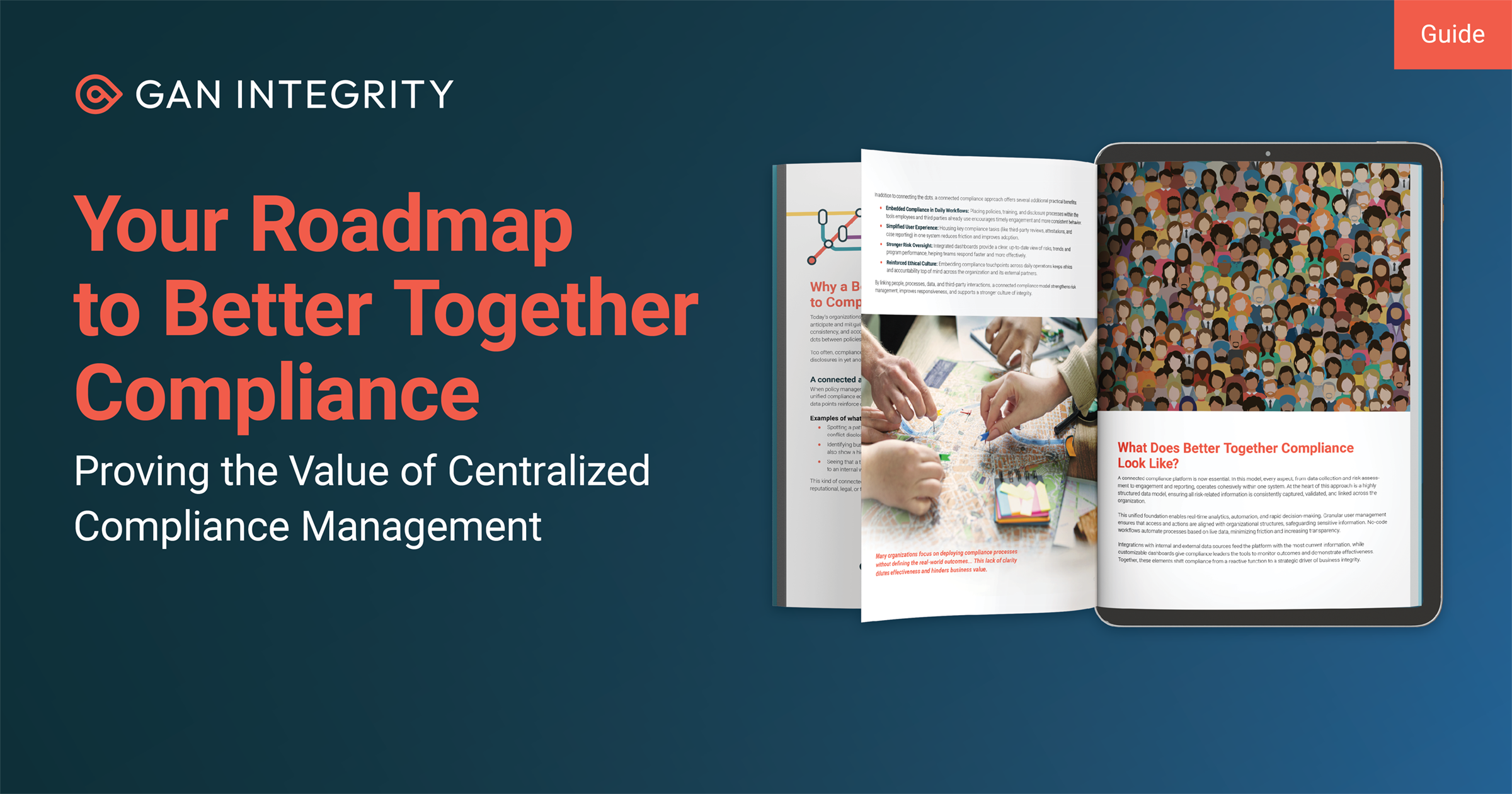In today’s compliance landscape, the number of third parties a business relies on is growing fast—and so is the risk they bring with them. Suppliers, resellers, consultants, logistics providers, agents—the list goes on. Managing that risk effectively is no longer a “nice-to-have”—it’s a critical capability for protecting your brand, your bottom line, and your regulatory posture.
But here’s the challenge: many companies are still relying on basic or standalone risk screening tools to manage what’s actually a complex, interconnected process. And it’s no longer enough.
Risk Screening Does Not Equal Risk Management
There’s nothing wrong with risk screening. In fact, it’s an essential first step. Screening solutions—especially those powered by AI—are getting smarter and faster at scanning vast amounts of media and structured data. That can help you identify obvious red flags early in the onboarding process.
But even the most advanced AI screening solution can’t solve everything—especially when it’s disconnected from the rest of your compliance ecosystem.
It’s point-in-time only
Risks evolve. Screening a third party once doesn’t tell you how they change over time—whether they’re subject to new allegations, lawsuits, or operational failures that could expose your company to risk.
It’s siloed
Screening data is powerful, but without integration into risk assessments, due diligence workflows, or corrective action plans, it’s just another alert in your inbox.
It can miss internal context
Third-party risk doesn’t exist in isolation. Employee disclosures, reported incidents, conflicts of interest—these are all part of a complete risk picture. Screening alone won’t help you connect the dots.
It lacks scalability
Even AI-powered tools can become inefficient when they’re not integrated into workflow automation, monitoring, or reporting. You’ll still spend time interpreting, routing, and acting on results manually.
What You Actually Need: A True TPRM Platform
Modern compliance programs require more than isolated tools—they need connected, scalable systems that combine automation, intelligence, and visibility across risk domains.
Here’s what best-in-class TPRM software offers:
Risk Screening and Risk Management
AI-driven screening is powerful—but when paired with configurable assessments, automated workflows, and built-in due diligence, it becomes part of a defensible, end-to-end process.
Integration with Internal Risk Signals
Third-party risks don’t live in a vacuum. The ability to correlate vendor risk with internal data—like employee disclosures, conflicts of interest, or ethics incidents—provides richer context and better decision-making.
Workflow Automation
Manual processes aren’t just slow—they’re risky. A strong TPRM solution helps you triage, escalate, and respond based on real-time risk data, without relying on spreadsheets or email chains.
Continuous Monitoring
Point-in-time screening creates blind spots. TPRM software should monitor third parties over time and alert you when risk profiles change—helping you adapt before the damage is done.
Audit-Ready Documentation
With regulations like CSDDD, LkSG, and UFLPA evolving quickly, it’s not enough to assess risk—you have to prove you did. A strong platform builds audit trails and reporting into every step.
The Future Is Integrated
AI-powered risk screening is an important advancement—but it’s just one piece of the puzzle. The future of third-party risk management is connected, contextual, and continuous.
It’s about marrying risk screening with:
- Tailored risk assessments
- Ongoing due diligence
- Internal data like disclosures and incident reports
- Continuous monitoring
- Clear, actionable workflows
A platform like GAN Integrity’s Third-Party Risk Management solution brings all of these together—so you don’t just spot risk, you understand it and act on it at scale.
Ready to move beyond alerts and build a smarter, more strategic risk program? Schedule a demo and see how GAN Integrity helps compliance teams transform third-party risk into a source of strength.

